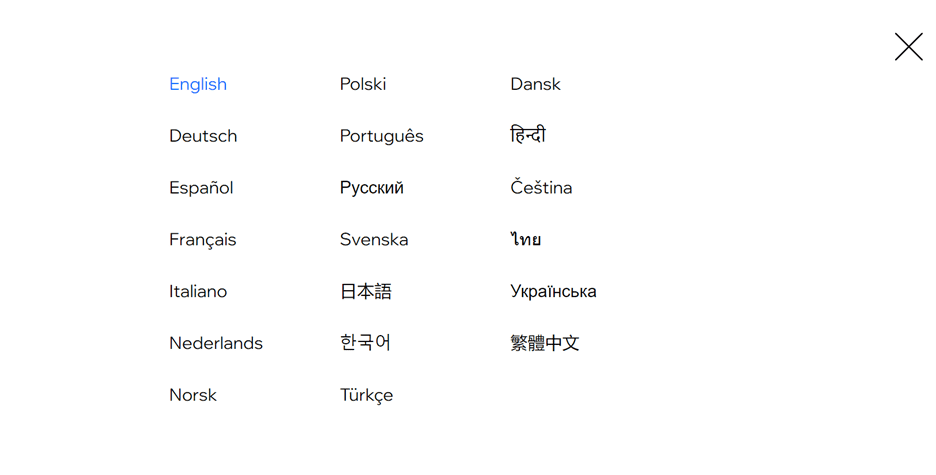Kateryna Ostapenko
As BLEND’s Director of Customer Services, Kateryna is an expert in leading efficient and effective customer support processes that result in happier customers and higher revenues for global companies.

When you own the corner store, a cheerful greeting and helpful attitude are the fundamentals of customer service. Customer centricity and service is no less important for global corporations, but a friendly smile is a hard thing to scale up. For international companies, putting customers at the center of your focus requires effort, but can have impressive ROIs.
Every statistic out there points to the same conclusion – you shouldn’t ignore customer service. Revenues increase for 84% of companies that improve their customer service, and the ones who are best at it do 80% better than the companies that aren’t. The stats for localized support are just as telling. Support in their native language increases brand loyalty among 70% of customers, and 62% are more likely to stick around even if they experience problems with the product.
Good customer service makes for loyal, profitable customers, but it can also help you in less direct ways. By helping your customers with their problems, you’re learning more about what those problems are. You can use that information to improve your product, develop features that will attract more paying customers, and find the marketing translation messages that are the most appealing. This level of communication is especially important when you’re dealing with a variety of local markets, each of which has its own preferences and priorities.
Support in their native language increases brand loyalty among 70% of customers, and 62% are more likely to stick around even if they experience problems with the product.
So why isn’t every international company pouring tons of resources into global customer support? Because it’s not that easy. Focusing on customer-centricity often requires a shift in company culture and mindset. For companies spread across the world, this shift can have unique challenges:
Internationalization means designing a product so that it can easily serve multiple markets. An international approach is often company-centric: one company, with centralized leadership, producing one product. Localization is usually a more customer-centric approach. Customers around the world use the same product differently. The target audience may vary, along with the customers’ needs, priorities, and budgets. The more you cater to the local market, the more you’ll sell.
Focusing on the wrong, or narrow, KPIs can mean ignoring opportunities. For example, customer acquisition is a great KPI for marketing and sales, but it doesn’t tell you much about the customer experience. Instead, start measuring customer retention and customer lifetime value. Most importantly, study each local market separately and make sure your expectations are realistic. In some places, getting to new customers is easy, but most don’t have the budget to buy over and over. In others, the competition may be fierce but customers may have a lot to spend. Success in these two types of markets should be defined differently.
Developing varied strategies and localizing all of your communication is an investment. Staying customer-centric in multiple markets taps your budget continuously, even after your initial launch. For many companies, the cost presents a major obstacle to providing multilingual customer support.
To be customer-centric, your customer support must be – or at least feel – local. That means that your customer support strategy must take into account differences in individual markets. To some degree, this will involve varied tactics and adjusted KPIs, but most of all it requires localizing your communication. That can mean setting up full-scale customer support teams all over the world – but it doesn’t have to. There are multilingual customer support solutions at every price point, and a mix-and-match approach can often be the most cost-effective for companies with limited resources.
Using translated content with a monolingual support team isn’t ideal, but sometimes that’s the only option. If you properly translate and localize your knowledge base articles, your customers should be able to find the answer to any question they have. Our Head of Support even argues that this is her philosophy; the best customer service is actually when the customer doesn’t have to contact support.
When localizing knowledge base articles that explain how to use your product, it’s important to pay attention to the little details. Don’t mention features or products that aren’t available in South America when localizing for LATAM, and don’t give prices in USD in Italian articles when you’ll actually charge them in Euro. If including screenshots to demonstrate a process, take them in the language of the article – using screenshots of the English website defeats the purpose of localization. Finally, make sure the content is written in a way that takes into account local nuances and slang.
These are just some examples, but the bottom line is to make the customer feel like the entire experience is local – from browsing your website, to finding answers to their questions, to finally making a purchase. And while localizing a large number of articles can seem overwhelming, working with an LSP like BLEND allows you to use an API easily translate a large knowadge base, without worrying about production bottlenecks.
Separate, localized support teams can be expensive, but offer some undeniable advantages over localized help articles. Multilingual customer support teams can be available in the right hours for different time zones, offering fast responses and familiarity with local expectations and support standards – all in the customer’s own language.
Setting up support teams in different time zones also opens up the possibility of Follow the Sun Support. This system lets you provide ’round the clock service by handing off responsibilities between shifts. Whether or not this is right for you will depend on your budget, customer needs, and how you plan to localize.
A third option is to offer asynchronous support via email or chatbot that allows customers to get responses in their own language, even if nobody on your team speaks that language. This allows you to provide the same level of support that you could with an international, multilingual team – without the pressure of actually hiring across the globe.
This also lets you take advantage of translation technology for faster, more cost-effective localization. Products like BLEND’s Multilingual Helpdesk for Zendesk allow users to combine machine translation and human editing. Your customers get fluent, knowledgeable service in their own language while you only pay for a single, international support team. It’s truly a win-win situation.
Back in May, BLEND CEO Yair Tal discussed what these options look like in practice on a panel at SlatorCon Remote with Shopify Localization Programs Lead, Giulia Greco, and Wix Head of E-commerce Marketing, Liat Karpel Gurwicz. Wix, for example, offers a multilingual help center in 20 languages, and also gives its customers the tools to integrate multilingual capabilities into their own sites.


Shopify takes a cross-departmental approach to localization, with customer service, marketing, and sales working hand-in-hand. Different approaches make sense for different departments, and overall the company uses a combination of machine translation, transcreation, and original content for different markets.
Being customer-centric means seeing your business from your customers’ perspectives, even if that means different perspectives from all over the world. No matter how or how much you want to invest, you can’t afford to neglect customer support localization.
Learn more about how you can localize your customer service and help center content with BLEND’s Multilingual Helpdesk and other localization solutions and Contact Center and IT Managers Services.
What our customers are saying